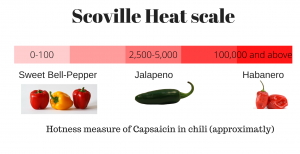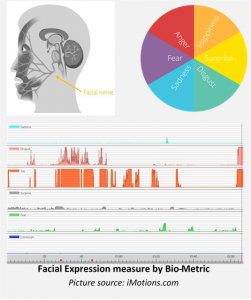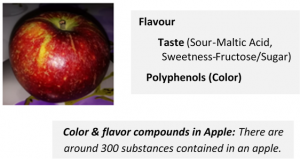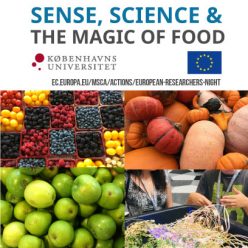
By Mukti Ram Chapagain
What makes pupils learn and understand science in an effective way? What if student can participate to explore things scientifically that matter to us in our daily life? What can be better than Food as an opportunity to explore Science? And opportunity can be more burning hot than chili? Along with SESAM partner Langhøj School we set out in the Science Week 39 to develop a science case around the unique characteristics of the taste and hotness of chili and how it can be measured. We later developed the approach to also deal with taste aspects of Black and White Pepper, Vanilla, Cocoa bean (Chocolate), and Apple of different colors and tastes (Sweer and sour).
Chili and its Hotness
We already know it: Chilies come in different strengths in relation to its hotness. The hotness comes from the chemical compound Capsaicin which can be measured through the Scoville Scale. Capsaicin can cause irritation for mammals, including humans, and produces a sensation of burning in any tissue with which it comes into contact. Based on the amount of Capsaicin compound – measured on the Scoville Scale – in the chili, one can feel hotness on it. However the feeling of hotness is subjective, this means different people feel and react differently toward the same hotness.
Aim and objectives of the Lab:
he Chili-Lab is one of the learning stations for food that has been used in Young Minds food Lab (YouMiLa) that was originally developed at Aalborg University as part of the FoodscapeLab. The YouMila has been used as a tool to explore different aspects of food taste and food literacy.
We soon discovered that chili is a very good learning case. It has got a well define taste active chemical compound and it triggers a well defined sensory reaction that can be measured biometrically. The Chili lab can be used to achieve different objectives such as
- To introduce the chemical compound in chili: Capsaicin
- To introduce smart technologies (bio-metrics) that can be used to measure sensory reaction (Facial Expression)
- To introduce the technique to measure “chiliness/hotness” in chili (Scoville Heat-hotness caused by Capsaicin compound)
Biometric sensing of chili compounds
Biometrics is the art and science of measuring “biosignals” using sophisticated digital technology. In other words, Bio-Sensors could help to understand implicit (unconscious) decisions made by humans. We have been using Facial Expression Analysis to measure different facial expressions while testing chili. The biometric approach measures facial expression – how the facial response is changing during the progression of the tasting event and it includes mapping emotional expression – the look and feel of fear, anger, happiness, sadness and disgust. Facial expressions and emotions are closely intertwined so emotional attachment to the product or subject can affect Facial expression.
Learning perspectives and didactic insights
We found that students can obtain important learning insights through  experimenting with different kinds of chili. For instance they can test the taste and perceive strength of different chilies with different levels of hotness expressed by their Scoville Scale value. Students can also explore the relevance of chemical compounds and their immediate effect in their body (sensory reaction, emotions, body expression and facial expression). In addtion to undertanding the traditional Scoville scale, students can also get important learning insight on the use of Bio-metrics and biosignals. We used the iMotions suite to measure and analyse facial expression and we found that this can be a good way to create awareness and curiosity about digital technology and understand how food exposure lead s to a sensory reaction in our body (face).
experimenting with different kinds of chili. For instance they can test the taste and perceive strength of different chilies with different levels of hotness expressed by their Scoville Scale value. Students can also explore the relevance of chemical compounds and their immediate effect in their body (sensory reaction, emotions, body expression and facial expression). In addtion to undertanding the traditional Scoville scale, students can also get important learning insight on the use of Bio-metrics and biosignals. We used the iMotions suite to measure and analyse facial expression and we found that this can be a good way to create awareness and curiosity about digital technology and understand how food exposure lead s to a sensory reaction in our body (face).
The simple chili experiment was divided into 3 sections: Introduction, smelling, and tasting. In the beginning a general introduction of Chili and its chemical compound (Capsaicin) and its relevance was provided. After the introduction, students were asked to look, smell, and feel three different kinds of Chilies that were with different levels of Hotness (on the Scoville Scale). After they have some kind of subjective opinions of the three different chilies, students were voluntarily chosen to test these chilies one by one. While they were testing chili, Facial Expression was captured using a standard webcam, measured by a Biometric system provided by iMotions A/S, and displayed on a screen in an easy to understand infographic way that all the students could see. The measurement and display of the bio-metric signal helps students to create interest and understand the effect of chili in the face and – in the end – interest in digital technology.
 The very first task in this learning approach was to create interest and awareness. The lab and the approach have been able to develop and maintain the interest of the students (primary level in Danish school) to explore the intending topic in the food such as: Food chemicals, taste, and sensory reactions in our body, food sustainability, and healthy food. The initial interest and basic awareness of the intended food topics motivate students to conduct further exploration. The exploration does not only limit to chili but is further extended to other food products that contain diffe rent compelling chemical compound and sensory effect. For instance: What makes Black Pepper so spicy? What is responsible for the flavor of Vanilla? What makes Apple sweet and at the same time sour? And what cause bitterness of the chocolate (cocoa)?
The very first task in this learning approach was to create interest and awareness. The lab and the approach have been able to develop and maintain the interest of the students (primary level in Danish school) to explore the intending topic in the food such as: Food chemicals, taste, and sensory reactions in our body, food sustainability, and healthy food. The initial interest and basic awareness of the intended food topics motivate students to conduct further exploration. The exploration does not only limit to chili but is further extended to other food products that contain diffe rent compelling chemical compound and sensory effect. For instance: What makes Black Pepper so spicy? What is responsible for the flavor of Vanilla? What makes Apple sweet and at the same time sour? And what cause bitterness of the chocolate (cocoa)?
The Chili-Lab challenge has been developed by Hannah Hoffmann, Mukti Ram Chapagain, Alan Hammershøi, RagnhildurGuðmannsdóttir and Bent Egberg Mikkelsen. Birger Larsen, AAU; Kiara Heide and Holger Lunden from iMotions have provided valuable support for the biometric methods development. The SESAM project is part EU MSCA Researchers Night program and has received funding from the European Union’s Horizon 2020 research and innovation programme under grant agreement No 955400.
 Mukti Chapagain is a consultant at Young Minds Food Lab and an independent researcher.
Mukti Chapagain is a consultant at Young Minds Food Lab and an independent researcher.
